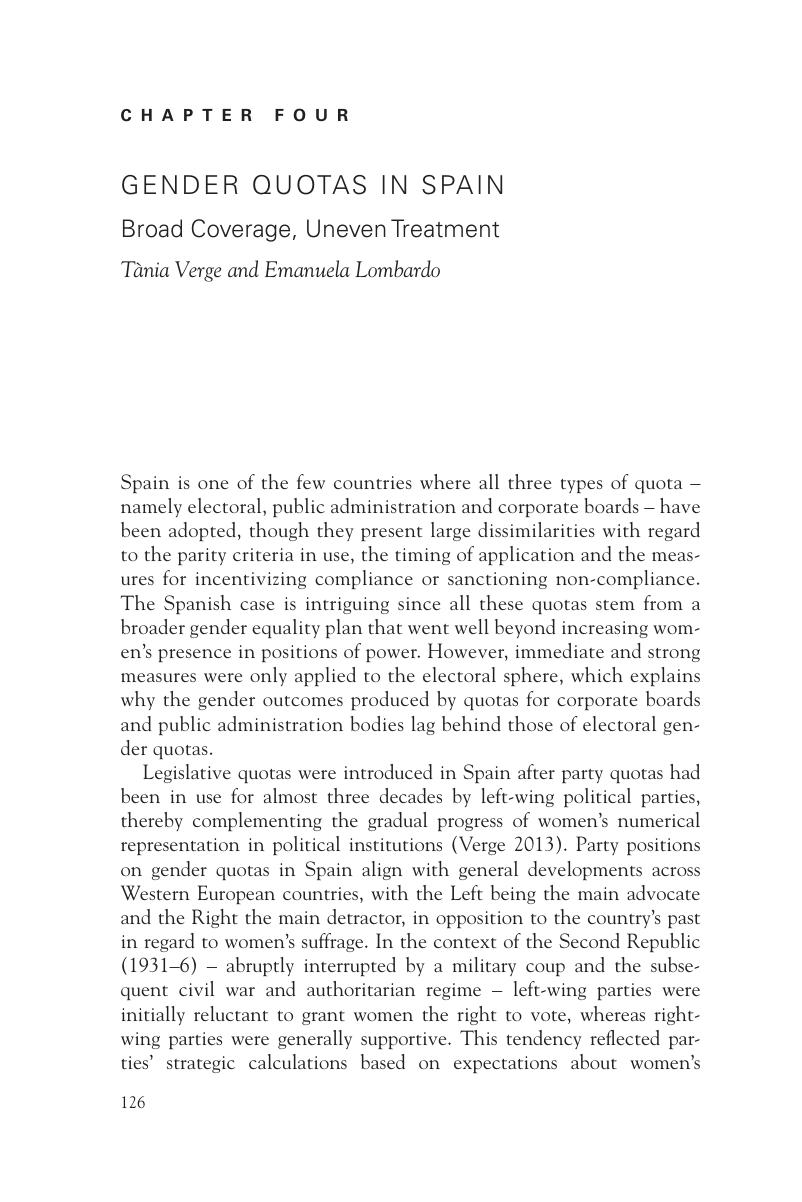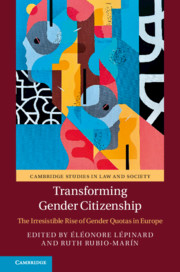Book contents
- Transforming Gender Citizenship
- Cambridge Studies in Law And Society
- Transforming Gender Citizenship
- Copyright page
- Contents
- Figures
- Tables
- Acknowledgments
- Introduction
- Part I Gender Quotas As Transformative Equality Remedies
- Chapter One Gender Quotas in Belgium
- Chapter Two The French Parity Reform
- Chapter Three The Role of Gender Quotas in Establishing the Slovene Citizenship Model
- Chapter Four Gender Quotas in Spain
- Part II Gender Quotas As Symbolic Equality Remedies
- Part III Gender Quotas as Corrective Equality Remedies
- Part IV Gender Quotas As Accessory Equality Measures
- Conclusion
- Index
- Cambridge Studies in Law and Society
- References
Chapter Four - Gender Quotas in Spain
Broad Coverage, Uneven Treatment
from Part I - Gender Quotas As Transformative Equality Remedies
Published online by Cambridge University Press: 21 July 2018
- Transforming Gender Citizenship
- Cambridge Studies in Law And Society
- Transforming Gender Citizenship
- Copyright page
- Contents
- Figures
- Tables
- Acknowledgments
- Introduction
- Part I Gender Quotas As Transformative Equality Remedies
- Chapter One Gender Quotas in Belgium
- Chapter Two The French Parity Reform
- Chapter Three The Role of Gender Quotas in Establishing the Slovene Citizenship Model
- Chapter Four Gender Quotas in Spain
- Part II Gender Quotas As Symbolic Equality Remedies
- Part III Gender Quotas as Corrective Equality Remedies
- Part IV Gender Quotas As Accessory Equality Measures
- Conclusion
- Index
- Cambridge Studies in Law and Society
- References
Summary

- Type
- Chapter
- Information
- Transforming Gender CitizenshipThe Irresistible Rise of Gender Quotas in Europe, pp. 126 - 154Publisher: Cambridge University PressPrint publication year: 2018
References
- 6
- Cited by



